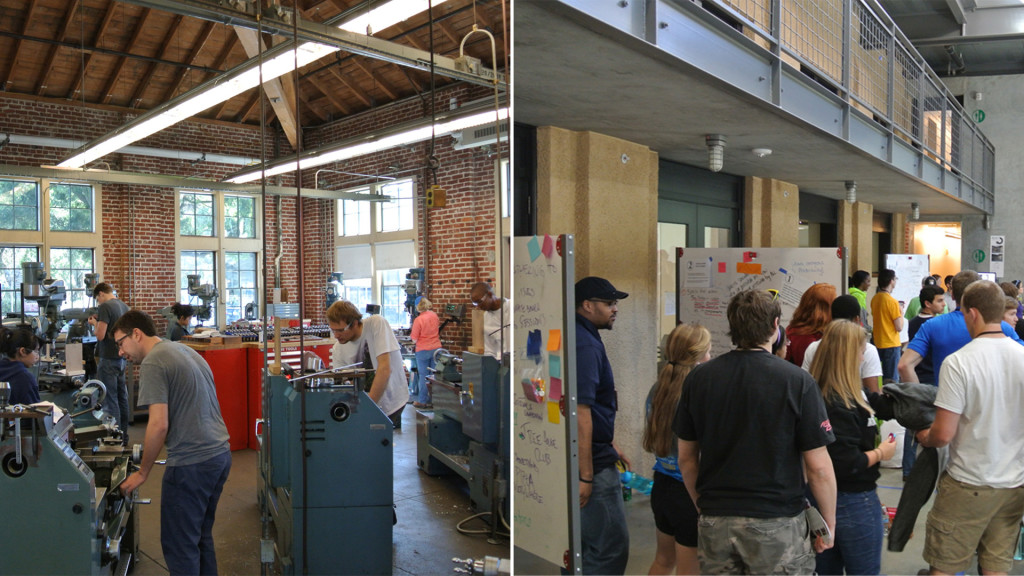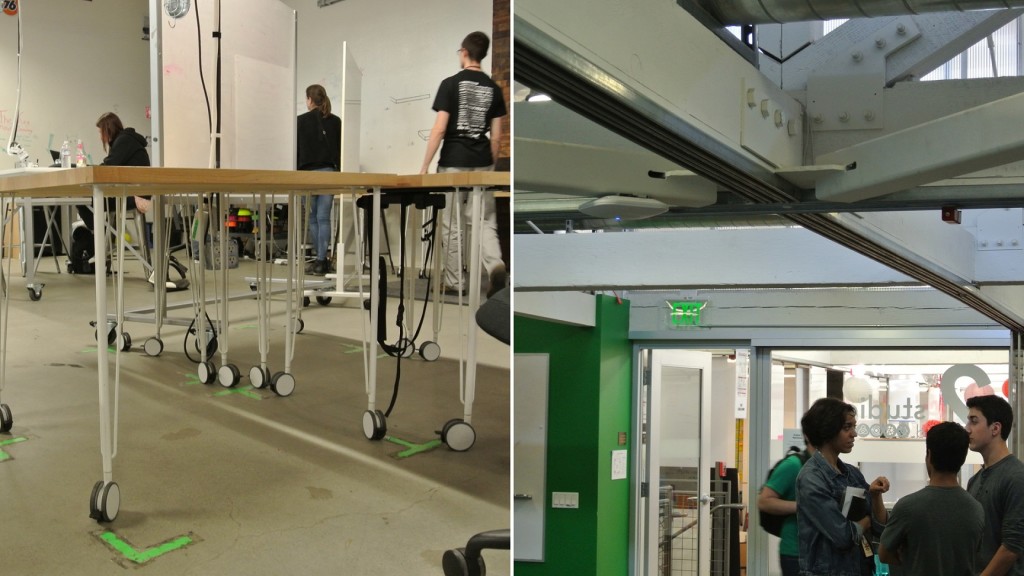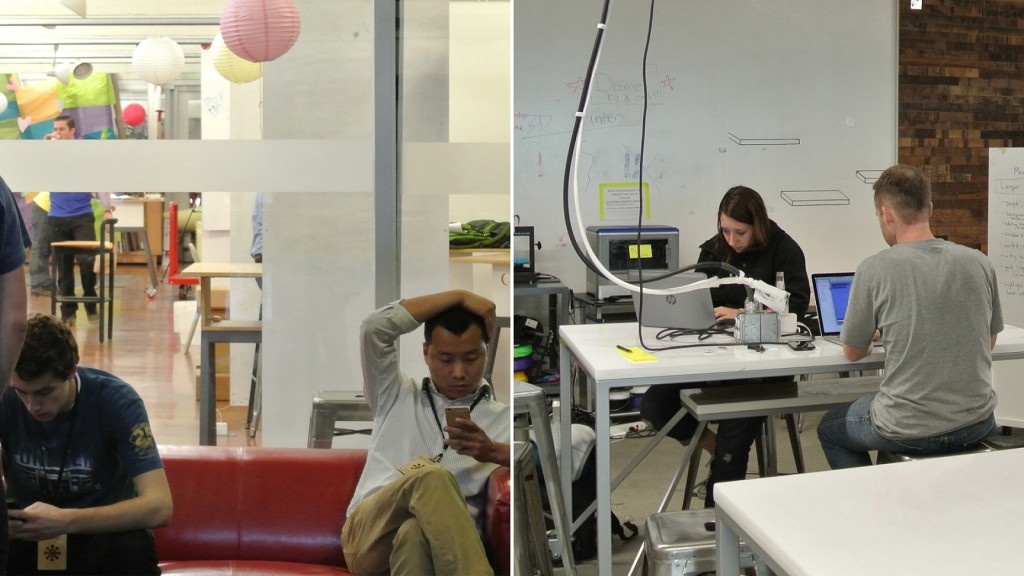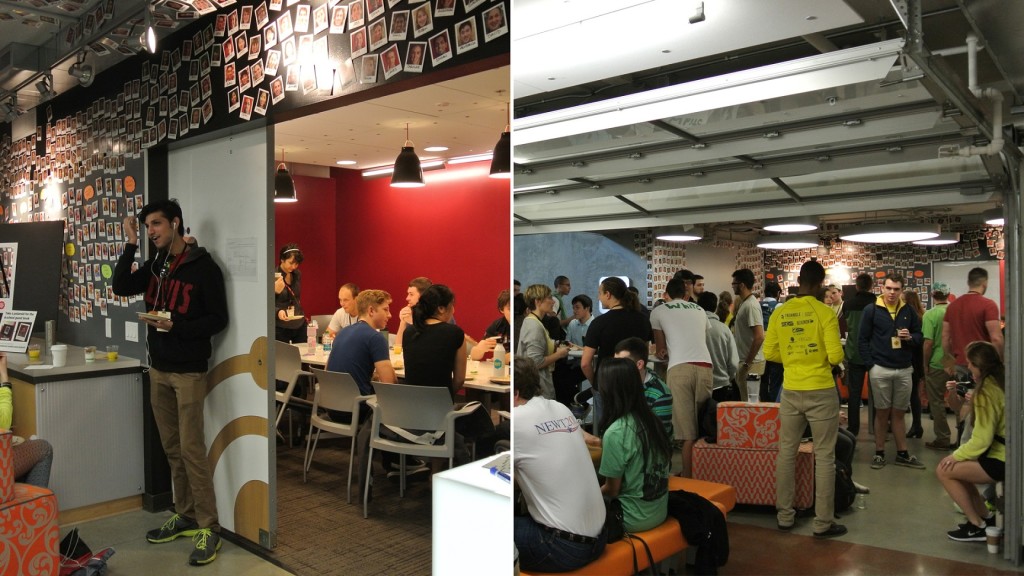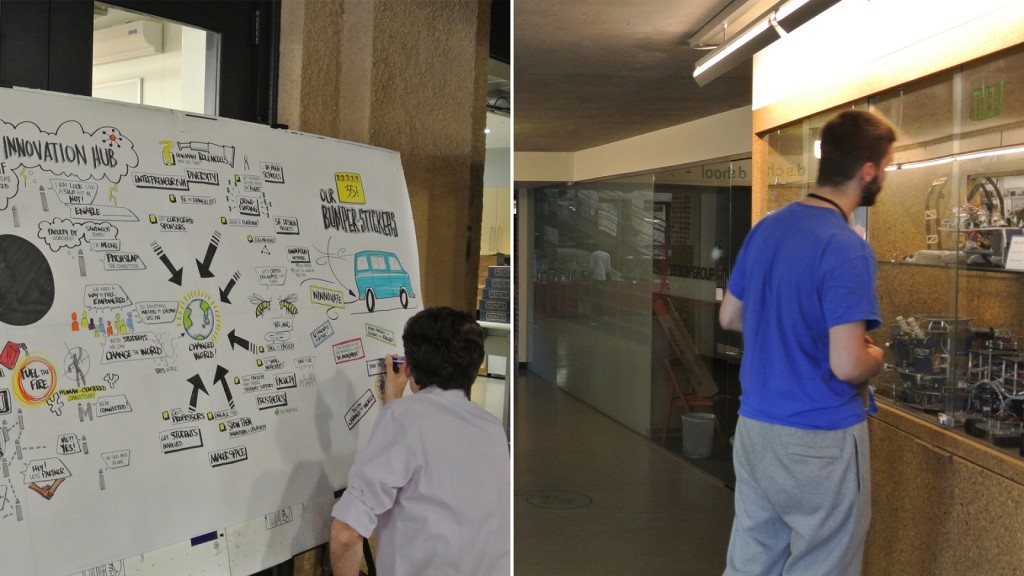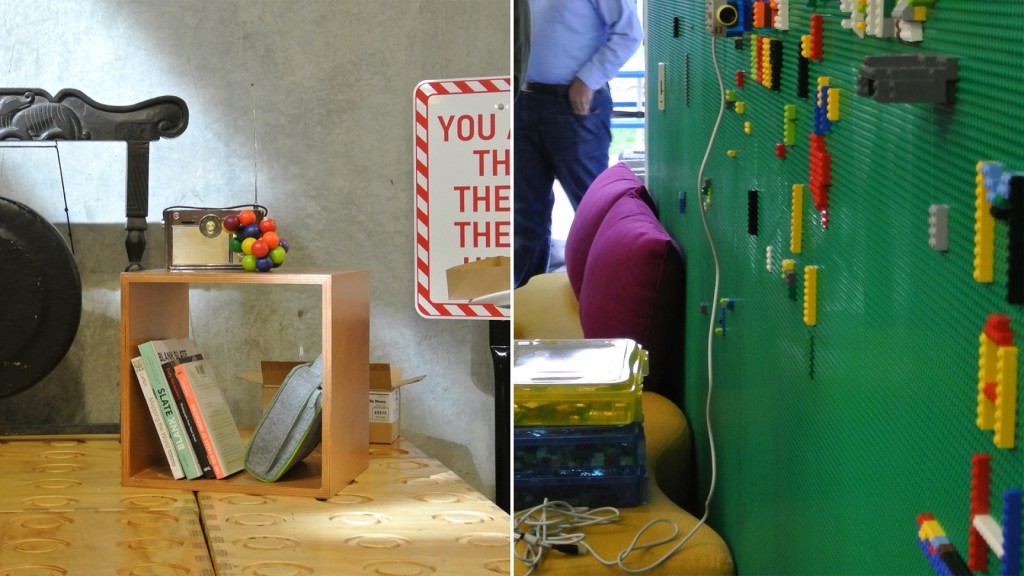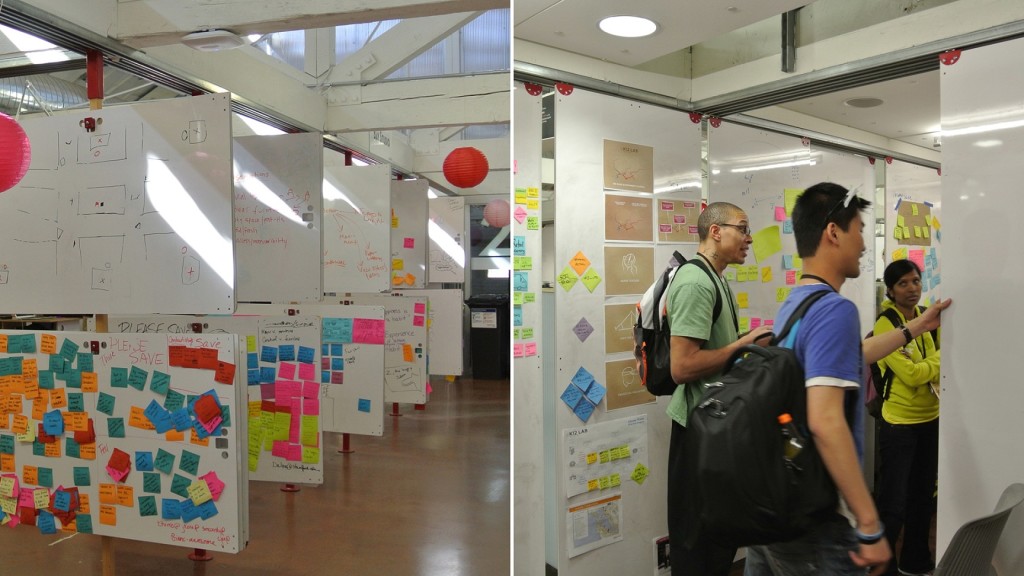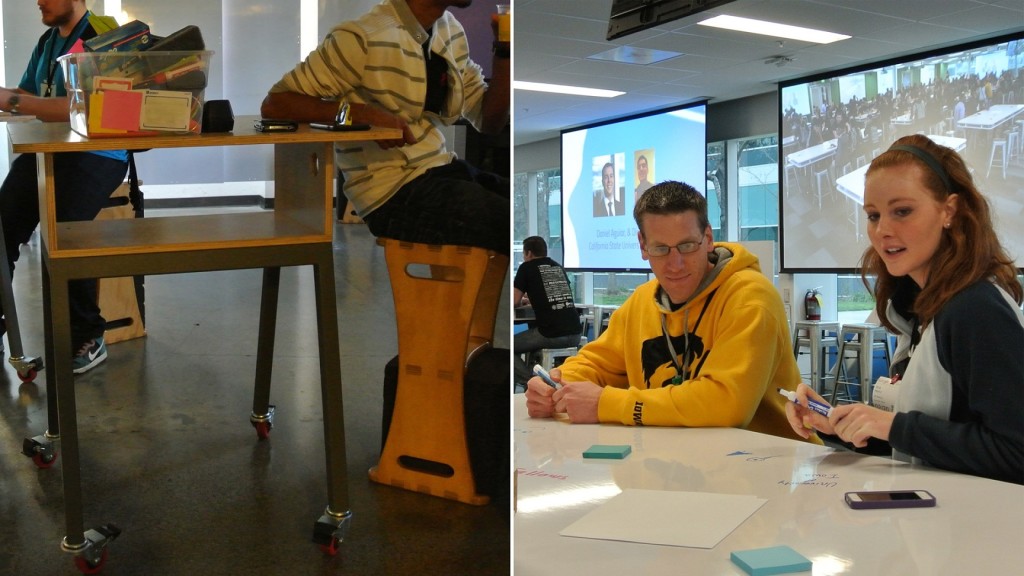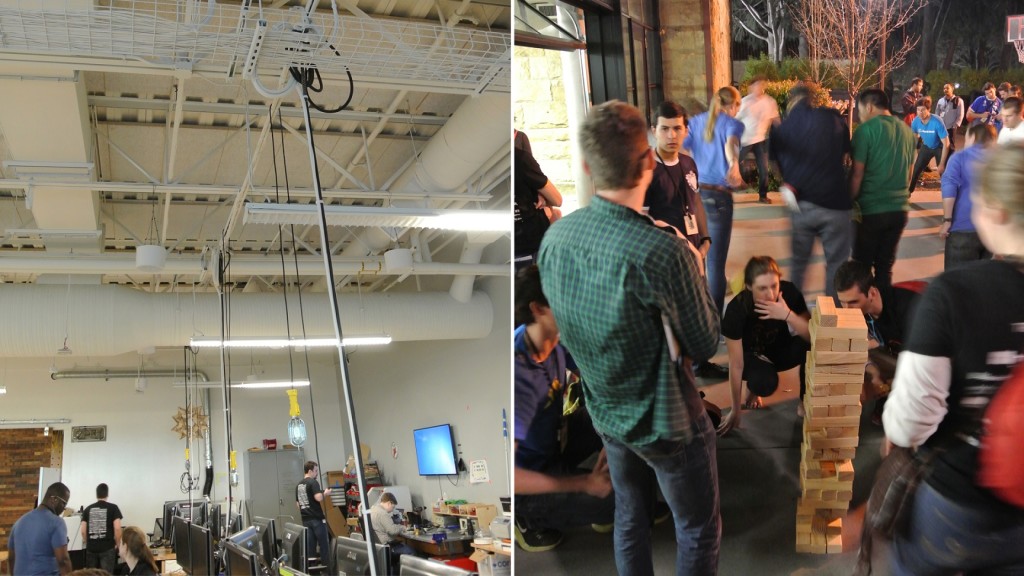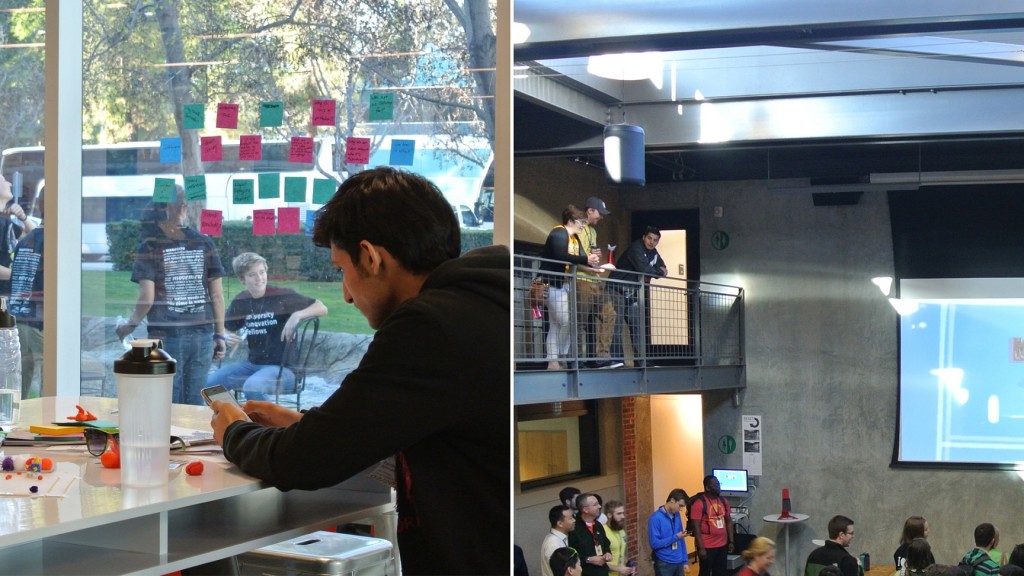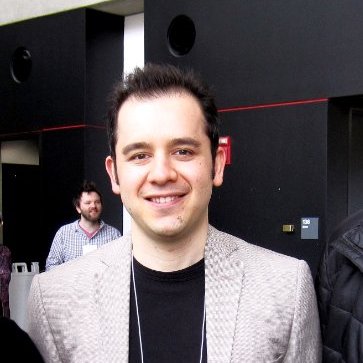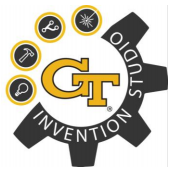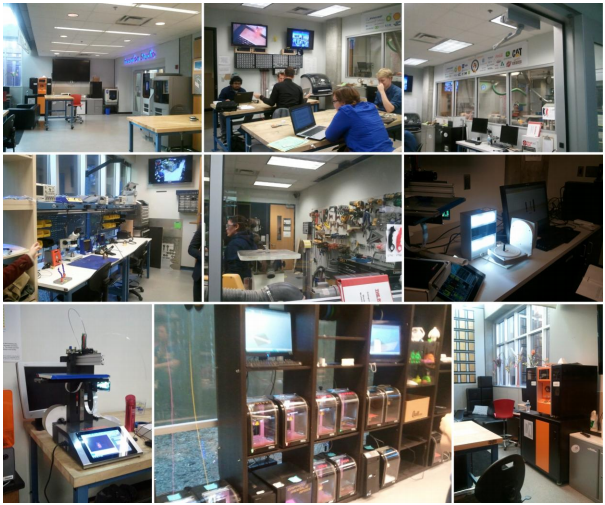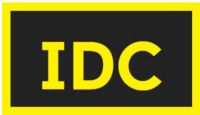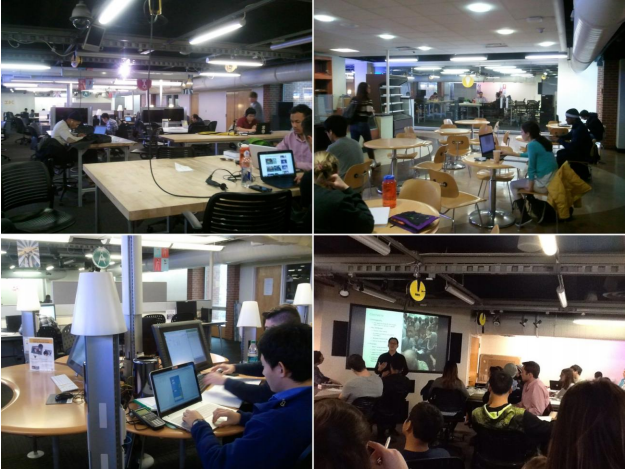Spaces for Innovation: 12 Suggestions
Google “space for innovation” and several hundred results will show up. The difference between this piece and others is that I compiled it on my flight back to Milwaukee and after visiting some of the most inspiring innovation spaces in Silicon Valley. Without further ado, I would like to present to you, 12 architectural suggestions to make a space for innovation:
- Increase Density, Involve Catalysts
Increasing density while involving a catalyst brings about more successful collisions. In Chemical Kinetics, this is known as the Collision Theory. In the physical space, magnets (physical or programmatic features that attract people to a place, e.g. food) and anchors (physical or programmatic features that keep people in a place, e.g. comfy chairs) can increase density while triangulators (physical or programmatic features that prompt people to talk to each other, e.g. art) can act as catalysts.
- Allow Controlled Environmental Improvisation
People need to be able to adjust the environment to control the functional, visual, and auditory properties of space. Yet, flexible spaces seem to be most productive when coupled with subtle instructions inspired by best practices. Such spaces allow people to create different configurations within an effective framework. The best practices framework can be conveyed through the weight of the furniture, degree of transparency in dividers and partitions, ceiling height, shape of the room, the mood of the space, resources provided in space, the direction of rails/racks for moveable whiteboards/partitions, the direction of spatial expansions and contractions, etc.
- Sync the Space with the Medium
The terms ‘lean back’ and ‘lean forward’ are referred to two styles of engagement with the media. Lean back engagement is mostly associated with ‘high absorption’ and happens when we are watching TV, reading a book, using tablets, flipping through a magazine, etc. Lean forward engagement is mostly associated with ‘high activity’ and happens when we are using the web, writing on white boards, working with a desktop, etc. It is important to sync the space with the media that encourage lean back, lean forward, or the fusion between the two (double/triple viewing).
- Use the Space to Syncopate a Rhythm for the Community
Good space design corresponds to the choreography of complementary community events such as: whole community gatherings and small-group breakout sessions, exposure to a wide range of ideas and focus on specific problems, idea-sharing forums and tool-building projects, conceptual theorizing and hands-on prototyping, etc.
- Strategic Juxtaposition
It is always important to provide a wide range of spatial and experiential opportunities corresponding to different states of innovative process: prototyping, reflecting, brainstorming, iteration, ideation, etc. Yet, what is even more important is the tapestry of these spatial and experiential opportunities. Strategic juxtaposition refers to creating an effective tapestry: programmatically neutral space adjacent to heavily programmed space, experientially restorative nook located in high intensity work area, alternative areas of light and dark to increase emphasis on certain locations, etc.
- Create a Collective Understanding of the Aesthetics of the Work
Most art and design schools tend to publicly display models, drawings, projects, and other artifacts that are produced in the community. Doing so, members of the community participate in creating a collective understanding of their culture by reproducing the clues that they receive from their surroundings on a daily basis: subtle details that make a great painting, a language to talk about surreal movies, graphic techniques to make political posters, etc. A good space is expressive of the community’s culture and a living gallery of its practices.
- Provide Opportunities to Break Away from the Collective Understanding Explained in No. 6
In response to Google’s query about best environments for innovation, the Co-founder of Terraform One Mitchell Joachim writes: “Design is seeing new qualities in everyday objects. We surround ourselves with these seemingly random items to be inspired just so. Our working studio is similar to the toymaker’s shop in Ridley Scott’s Blade Runner – a physical narrative of possibilities ready to be animated.”
- Provide Jottable Surfaces that Move
People never know when and where ideas might strike. Some ideas are volatile and need to be rendered in diagrams or transcribed before they are forgotten. This requires for jottable surfaces to be everywhere. Moreover, making these surfaces as mobile as possible facilitates the cross-pollination of ideas, sharing, and brainstorming.
- Desk +
Desks and tables should be thought of resourceful objects that actively contribute to the ecology of innovation. Whiteboards, storage spaces, power and cable outlets, lighting, wheels, etc. are features that can be incorporated to desks and tables with different types and sizes in order for them to become smarter objects.
- Adjust the Mood of the Space
To be innovative, people should be encouraged to dream big, don’t hold back ideas, tinker and play, test their ideas, and don’t fear the failure. Accordingly, the mood of the space should be playful, leveler, rustic, casual, experimental, and show bias towards action.
- Create Peripheral Conditions
Most communities are consisted of both core and peripheral members. Peripheral members maintain a connection but are not as engaged and committed as core members. They are valuable potential core members who have a unique and useful insight about the community. Yet, space is often designed to address the needs and behaviors of core members. Peripheral participation requires a degree of permeability in space to provide legitimate access to resources, low-intensity engagement, or even non-participant observation of the work process.
- Use Data-driven Evaluation Strategies to Inform the Use of Space
That!
-Amin Mojtahedi, University Innovation Fellow ’15
This article was written by Amin Mojtahedi, a University Innovation Fellow at the University of Wisconsin at Milwaukee. Amin is a Ph.D. candidate in the School of Architecture and a Researcher-Designer at Workshop Architects. See his full bio here.

